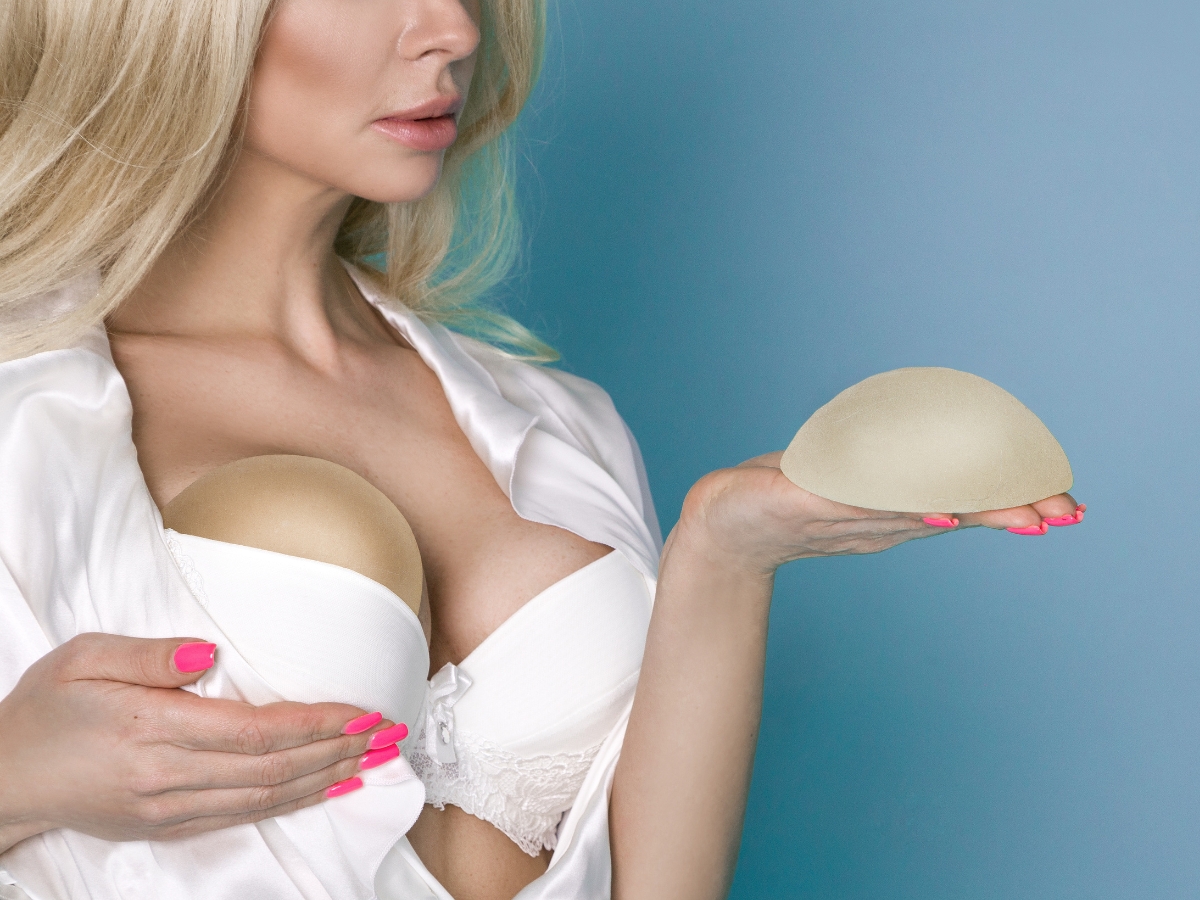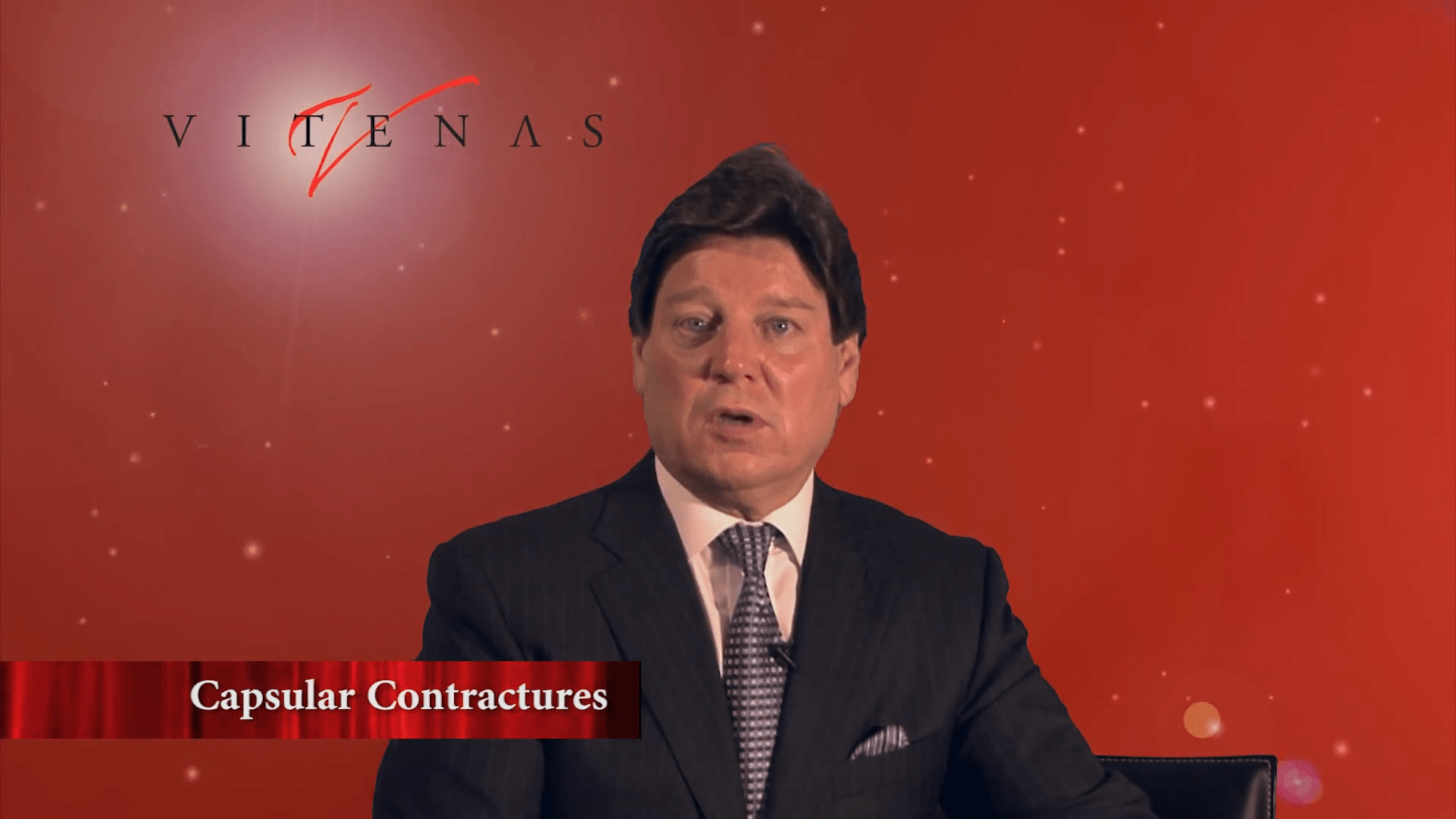Implant Failure
Reserve a Free VIP Consultation

About Breast
Implant Failure
Why Do Breast Implants Fail?
Breast implant failure can manifest in various forms, such as implant rupture, capsular contracture, or aesthetic dissatisfaction. Ruptures in saline implants are immediately noticeable due to deflation, while silicone implant ruptures might be subtler, requiring MRI scans for detection. Some of the main causes of breast implant failure have to do with the initial surgery, while others are related to outside factors. There are several possible reasons for failed implants, including:
- Implant aging or wear and tear: Implants aren’t lifetime devices and can wear out as they get older. The older the implants are, the higher the risk of failure.
- Needlestick: During a biopsy or other procedure, there’s a chance that a needle will poke the implant, making a hole that leads to a leak. In some cases, the rupture can occur due to a needle stick that occurs during the initial surgery.
- Excessive force on the implant: If the implant gets hit with a lot of force, such as during a car accident or when a person gets tackled playing a sport, there is a chance of rupture.
- Constrictive scar tissue (capsular contracture): Scar tissue naturally forms around the implants after surgery. If the tissue tightens around the implant too much, however, it can cause deformity and failure.
Saline Implants vs. Silicone Implants
Saline implants can be filled after insertion by the plastic surgeon, meaning it’s possible for the surgeon to make a smaller incision during the surgery. The implants are then filled with a sterile saltwater solution. If a saline implant breaks, the body harmlessly absorbs the salt water. During your consultation, Dr. Vitenas will help you make the right choice.

Round and Tear-Drop Implant Shapes
Modern implants come in a selection of shapes, including round and tear-drop. Round implants typically provide the most projection, as they will not cause a deformity in the breast, should the implant turn or migrate in any way.
Tear-drop implants are supposed to provide a better initial shape to the breast, but in reality, there is little visible difference between a round implant and a tear-drop-shaped implant, once they are placed inside the chest. Tear-drop implants have a tendency to shift, changing the shape of the breast.
The Size of Your Implants
Breast implants are measured in volume, usually in cubic centimeters. Size options range from 100 cubic centimeters to 1,000 cubic centimeters. For many women, the sweet spot seems to be in the range of 300 to 500 cubic centimeters.
Implant volume isn’t the only factor that affects the size of the breasts after surgery. A woman’s frame and the size of her existing breasts also play a role. An identical pair of 300 cc implants can look dramatically different on two different women.
What Happens During
Breast Implant Placement
During breast augmentation, a plastic surgeon will place the implants above or beneath the chest muscle. The submuscular position is often the most aesthetically pleasing, particularly when a patient doesn’t have a lot of natural breast tissue. Submuscular placement usually is less likely to result in deformity or cause wrinkling of the skin.
At the start of the surgery, your surgeon will make an incision, typically in the crease just beneath the breasts. Working through the incision, they will make a pocket in the breasts for the implant. After creating the pocket, the surgeon will place the implant in the breast. Saline implants are filled after placement, while silicone implants are pre-filled.
UnderstandingSilicone Breast Implant Failure
Generally speaking, older silicone implants are more likely to rupture or fail than newer ones. Newer silicone implants are made from a more advanced cohesive gel that’s less likely to leak than older versions.

The Causes of Capsular Contracture
Intracapsular vs. Extracapsular Rupture
Silicone Breast Implant
Failure Symptoms
THE “SILENT RUPTURE”
COMMON SYMPTOMS
CHANGES IN SHAPE

Silicone Breast
Implant Failure Rate
The likelihood of silicone implant failure increases the longer a woman has had her implants. That is especially true for older implants. The latest generation of implants are manufactured to be lifetime devices but do have a small failure rate studies show to be about 1% a year.
Older generations of implants, however, especially those that are older than 20 years are more have a much higher failure rate and should be replaced. It’s possible for women to have the same implants for several decades without any problems. With that said, breast implants should be monitored on a routine basis and may need to be replaced at some point.
Detecting Silicone
Breast Implant Failure
Although a ruptured silicone implant can cause symptoms that alert you to the issue, a silent rupture can go unnoticed. If you’ve experienced something that you think could have damaged your implants, you can ask your doctor to perform imaging on your breasts to get a better look.
An ultrasound or MRI will take a picture of the breasts and implants, enabling your doctor to examine the imaging to see if the implant ruptured. They can also check for silicone gel in the capsule or elsewhere in the body to ensure your overall safety.
Even if you have avoided accidents that could have damaged your implants, it might still be a good idea to schedule imaging every few years to monitor the status of your silicone implants.
Saline Breast Implant Failure
While a silicone implant can fail silently, escaping notice, a saline implant rupture often causes much more dramatic changes that are generally easier to spot.
Saline Breast Implant Failure Symptoms
When a saline breast implant fails, the saltwater inside of the implant leaks out. Depending on how quickly the liquid leaks out, the implant can seem to deflate before your very eyes. If the leak is slow, you might notice that the affected breast becomes smaller and smaller over time.
Saltwater is a harmless substance and the human body contains it naturally. When the saline solution in an implant leaks out, the body eventually reabsorbs the saline, without the risk of complications or harm.
Saline Breast Implant Failure Rate
Like silicone implants, saline implants are more likely to fail the older they are. In general saline implants leak at a rate of 1%per implant per year, therefore in ten years, there is a 20% chance that one of your implants will leak causing your breast to deflate. The average age of the patient when the failure occurred is just over 48, suggesting that most women with saline implants will want to replace their implants at least once during their lifetime.
The average age of the patient when the failure occurred was just over 48, suggesting that most women with saline implants will want to replace their implants at least once during their lifetime.
Detecting Saline
Breast Implant Failure
OTHER BREAST IMPLANT CONCERNS
Although implant rupture is a common reason for implant failure, it’s not the only problem that can occur. Several other complications can occur after breast augmentation that affect the shape of the breast and typically require implant removal or replacement.

Capsular Contracture
The formation of scar tissue is natural and expected after breast augmentation. The capsule of fibrous tissue that forms around the implant holds it in place. Capsule formation is also the body’s way of keeping the implant separate from the rest of the body, as a type of defense mechanism.
The formation of scar tissue is natural and expected after breast augmentation. The capsule of fibrous tissue that forms around the implant holds it in place. Capsule formation is also the body’s way of keeping the implant separate from the rest of the body, as a type of defense mechanism.

Wrinkling
of the Skin
Bottoming Out
of the Implants
Over time, the position of the implants in the breasts can change, making the breasts themselves look droopy. One example of this shift in position is “bottoming out.”
If the implants aren’t properly supported by the pocket in the breasts, the effects of gravity can push them down so much of the implant ends up beneath the nipple. Replacing the implants or reinforcing the breast tissue can help correct bottoming out.
Schedule A Consultation
What Is Your Risk for
Implant Rupture or Failure?
The risk of implant failure, including rupture, is relatively low for most patients, even if the implants themselves wear out with time. Working with your surgeon to monitor your implants will help you detect any issues early on.
How to Prevent
Breast Implant Failure
If you are concerned about implant failure, know that there are several things you can do to reduce your risk or prevent implant failure altogether.
DO YOUR RESEARCH
ESTABLISH A RELATIONSHIP
LEARN ABOUT TECHNIQUES
Also, find out how the surgeon will handle the implants. A layer of bacteria, called a biofilm, can form on implants, increasing the risk of capsular contracture. Techniques that reduce the handling of the implants before surgery reduce the formation of the biofilm.
INFORM YOUR DOCTORS
If you are going to have a medical procedure performed that will involve a needle near the breasts, let the person know that you have implants, to reduce the chance of them accidentally poking the implants.
What to Do If You
Suspect Implant Failure
Options if There’s a Problem
With Your Breast Implants
At Vitenas Cosmetic Surgery, we offer state-of-the-art solutions for breast implant failure. Our approach includes thorough diagnostics to determine the cause of failure, followed by personalized treatment plans. Options may involve implant removal and replacement, capsulectomy, or revision surgeries using the latest techniques and materials.
IMPLANT REMOVAL
IMPLANT EXCHANGE
Like implant removal, implant exchange involves taking out the implants you currently have. During the procedure, the plastic surgeon will then replace the old implants with a new pair. You can choose a different size of implants during the exchange if you want. You can also go from saline implants to silicone or from silicone to saline, depending on your preference.
Breast implant exchange isn’t just performed to correct damaged implants. You might decide to replace yours if you are no longer happy with their size or material, even if the implants themselves are in good condition.


Why Choose Dr. Vitenas?
With over 30 years of experience performing cosmetic surgery, Dr. Paul Vitenas is one of the most sought-after plastic surgeons in Texas and across the country. He is a board-certified plastic surgeon in Houston, Texas who specializes in breast procedures. Here are a few key reasons Dr. Vitenas stands out:
- Board-Certified in Plastic Surgery: Dr. Vitenas is certified by the American Board of Plastic Surgery, ensuring he has undergone extensive training and meets high standards of patient safety and care. You can trust you are in experienced hands.
- Artistic Eye for Balance and Harmony: Dr. Vitenas possesses an impeccable artistic eye for balancing and enhancing the natural look of patients through breast implants, ensuring each procedure complements their unique features.
- Recognition: Dr. Vitenas' innovative techniques and personalized surgical style have earned him accolades such as the Best Single Physician Practice and Top Ten Plastic Surgeons in Middle America
- Caring Bedside Manner: Throughout your thigh lift journey, Dr. Vitenas and his staff provide exceptional patient care, education, and support. Patients appreciate his warm personality and dedication to their satisfaction.
- Outstanding Patient Reviews : Dr. Vitenas earns consistent 5-star patient reviews for his surgical expertise, bedside manner, and dedication to patient satisfaction.
Breast implant failure, while concerning, can be effectively addressed with the right expertise and approach. If you’re concerned about the state of your implants or would like a change, call 281-484-0088 to schedule a consultation with Dr. Vitenas today.
Implant FailureFAQ
Breast implants aren’t lifetime devices but they do have a relatively long life before they need to be replaced. Depending on circumstances, your implants can last for anywhere from a decade to more than 30 years.
Yes, both saline and silicone implants are FDA-approved and considered safe. In the 1990s, there was concern about silicone breast implants causing cancer. The FDA pulled them from the market for a while but approved them again in 2006 after no clear connection was discovered.
According to the FDA, some women report feeling fatigued or experiencing joint pain and memory fog after getting breast implants. Some women report that removing the implants helps to clear up their symptoms. It’s not fully understood whether the implants themselves are contributing to the symptoms or if there are other factors at play, such as autoimmune disorders or menopause.
No, having a ruptured or failed implant does not increase the risk of breast cancer. After extensive study, the FDA has found no connection between approved implants and breast cancer.
Many factors can influence the cost of having breast implants removed. One factor is the type of implants you choose to replace them with. The complexity of the surgery also influences the price. Your plastic surgeon can give you a realistic quote during a consultation.
The risks of breast implant replacement or removal are similar to the risks from other types of cosmetic surgery. Complications are rare, especially when an experienced surgeon is performing the procedure. Possible complications include infection, scarring, asymmetry of the breasts, and a loss of sensation near the nipples.
During implant removal or exchange, the plastic surgeon will usually make an incision in the crease beneath the breasts. The location of the incision means that any scarring will be well concealed by the breasts themselves.

